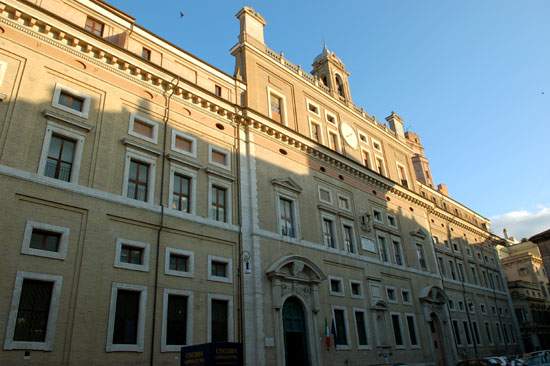Code-killing system will also be applied in Rome
MiBAC and Roma Capitale will collaborate on the adoption, in museums and archaeological sites in the center of Rome, of entrance management systems that allow for the reduction of queues, taking a cue from the system developed by theUniversity of L’Aquila and the Uffizi Galleries in Florence, which has already yielded excellent results in the first experiments. This was announced by the Undersecretary for Cultural Heritage with responsibility for digitization, Gianluca Vacca, and the deputy mayor of Rome with responsibility for cultural growth, Luca Bergamo, at the first meeting of the Dig.it MiBAC - Il digitale al servizio della cultura initiative. Also speaking were the director of the Uffizi Galleries, Eike Schmidt, and Professor Henry Muccini of the University of L’Aquila, who developed the algorithm behind the “code-killing” system.
“We want to bring the system that has worked so well at the Uffizi to more museums and archaeological sites in Rome, starting with the center, to improve the museum and cultural experience for visitors. The signing of the protocol with Roma Capitale to establish a technical working table to evaluate the adoption of the system in more Roman museums is on the home stretch. I am thinking, for example, of the Colosseum Archaeological Park with the Forums and the Capitoline Museums, two realities of different entities that both have a large flow of visitors. Programmed access could be studied, perhaps with a single ticketing system, so as to bring about a strong reduction in waiting times at the entrance and redistribute flows. We also discussed this with the director of the Archaeological Park, Alfonsina Russo, who showed interest and cooperation. In short, the system adopted at the Uffizi would make it possible on the one hand to increase the overall number of visitors in large realities, while at the same time guaranteeing a better quality of visits, and on the other hand to also support small and medium-sized museums, which could attract visitors thanks to the time they would recover from the reduction of queues at the entrances,” Undersecretary Vacca said.
“With the rise of mass tourism there has been a mercantile-type transformation of the cultural experience, so it is important to have tools to spread demand over a plurality of cultural venues. In Rome we have three major attractors on which the flow of tourism is concentrated, so we enthusiastically accepted the invitation of the MiBAC, aware that the transition from the Uffizi to Rome requires the need to find forms of collaboration that can reconcile having two managing bodies, the Ministry and the Campidoglio. It must be acknowledged that Undersecretary Vacca has taken the initiative on this very important project. I have absolute confidence that in a short time, in any case within a year, the city can ensure an intelligent and articulate offer in the field of cultural heritage enjoyment,” added Deputy Mayor Luca Bergamo.
The director of the Uffizi Galleries, Eike Schmidt, said, “The problem of long queues was resulting in a very low quality of offer for visitors, with people exhausted even before entering. To find a solution, with the University of L’Aquila we followed a dual approach, not only computer science but also sociology. By using this algorithm, more people enter and the democratic enjoyment of the site is expanded.”
“Two were the basic principles we were inspired by in developing the system, namely usability of cultural heritage and sustainability of tourism. The results say that at the Uffizi we have gone from 64 minutes of average waiting time on the first free Sunday in September 2018, with a maximum wait of 147 minutes, to 18 minutes of average waiting time on the first free Sunday in October 2018, the first in which the system was adopted, with a maximum waiting time of 30 minutes. All with an overall increase in visitor numbers. In Museum Week, the average wait time at the Uffizi was only 7 minutes. The model worked well in Florence and I am convinced that it is totally reproducible in Rome and elsewhere,” explained Prof. Muccini.
Source: MiBAC
 |
| Code-killing system will also be applied in Rome |
Warning: the translation into English of the original Italian article was created using automatic tools. We undertake to review all articles, but we do not guarantee the total absence of inaccuracies in the translation due to the program. You can find the original by clicking on the ITA button. If you find any mistake,please contact us.





























